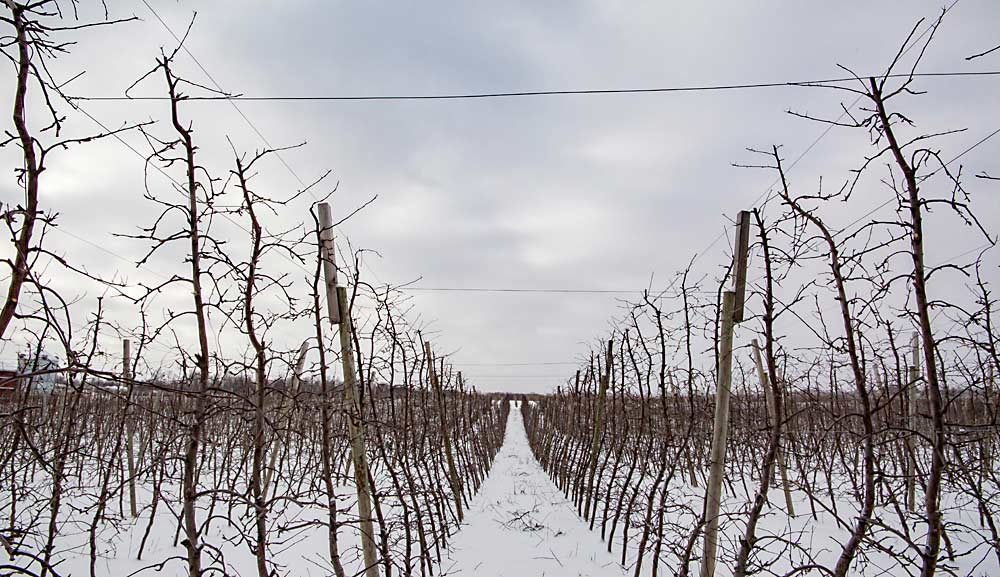
Orchardist Scott VanDeWalle discusses his young, nearly pedestrian orchard Thursday north of Rochester, New York, as one of the final tour stops for the International Fruit Tree Association’s annual conference. (Ross Courtney/Good Fruit Grower)
Scott VanDeWalle of VanDeWalle Fruit Farm in Alton, New York, has spent his 36 years growing fruit constantly upgrading his orchard, making his growing system smaller while his acreage has increased.
His latest orchard, purchased in 2016, is nearly pedestrian at 9-feet high with 2-foot density and features Honeycrisp, Gala, Fuji, Sweet Cheeks and SnapDragon.
VanDeWalle was one of the closing stops Thursday on the International Fruit Tree Association’s, or IFTA’s, annual conference in and around Rochester, New York.
VanDeWalle described how he renews his orchard incrementally to keep things new while still leaving him enough revenue. He also still has Macintosh, Red Delicious and other older varieties. Even his Galas are getting hard to maintain.

Do the trees look a little tilted? They are. Wafler Farms of Wolcott, New York, finds that work and harvest platforms function better when the trees are tilted slightly away from the workers. In a system the Wafler family calls Tall Spindle Tip, the tops of each row are 10 feet apart but the trees are angled roughly 8 degrees in the opposite direction. The platforms move down every other row. (Ross Courtney/Good Fruit Grower)
“We figured, in order to push out enough of the stuff that we have to, that’s not productive or unprofitable, we need to plant enough acres fast enough, get this going, to continue to replace what we have without losing our income,” he said. “That was kind of the thought process of why we decided to do this.”
VanDeWalle was one of four tour stops east of Rochester on Thursday, as IFTA’s four-day event drew to a close. Other topics included angled tall spindle rows, on-platform quality control cameras, variable soil maps and hail netting trials.

Though Rochester has modern architecture, the city’s history is always on display. While the city labors to rise above its industrial past, the fruit-growing region is working hard to incorporate innovative technologies and techniques. (Ross Courtney/Good Fruit Grower)
IFTA’s next event is the summer tour July 21-24 in Ontario, Canada.
—by Ross Courtney






Leave A Comment